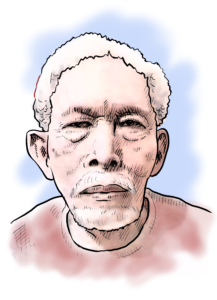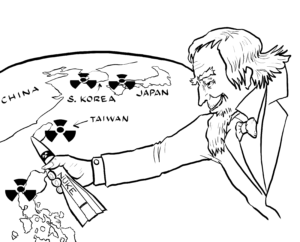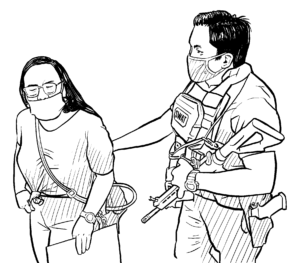Magnetite mining in Cagayan


The so-called Cagayan River Rehabilitation Project, a program for the extraction of black sand (which contains magnetite) at a portion of the Cagayan River in the town of Gonzaga officially kicked off last month under the pretext of “preventing siltation.” Magnetite is a one of the primary minerals used in producing steel.
The mining exploration of various companies in the rivers and seas of the province has been ongoing since 2010. Concessions for largescale mining in the area, however, have not pushed through due to the staunch opposition of residents and environmental groups.
To pass the said project, officials of the regime made it appear that its main objective is to “rehabilitate and restore” the Cagayan River. They railroaded the contract signing for the concession in December 2020, just few weeks after the typhoon Ulysses ravaged the province through massive flooding. The contract was awarded to the JDVC Resources Corp., a subsidiary of Apollo Global which is owned by bourgeois comprador Vittorio Paulo Lim.
The permit states that the company is allowed to extract the mineral resources in 1,902 hectares of rivers and seas that are covered by its Mineral Production Sharing Agreement (MPSA). This is currently the largest offshore mining concession in the country. Approximately 632 metric tons of black sand can be found in the area. The minerals that will be extracted from this area will be directly exported to China.
In January, 78 environmental organizations filed a petition to stop the project. They said that the magnetite mining operations is destructive to the ecosystem and marine life. It will destroy protected aquatic resources such as coral reefs, as well as aquatic plants which serve as food of rare animals such as seacows and whales. Its dredging vessels which process the black sand will dump hazardous chemicals directly to the sea. This will kill not only aquatic resources but also the livelihood of fisherfolk who rely on these waters.
26th year of the Philippine Mining Act of 1995
Last March 3, it has been exactly 26 years since the the reactionary state enacted the Philippine Mining Act of 1995, a law which paved the way for the all-out plunder of large mining companies and their local bourgeois comprador counterparts in the country. Latest data by the Mines and Geosciences Bureau indicate that there are around 503 mining and quarrying companies which cover 723,238 hectares of land in various parts of the country.
The biggest among these are the Financial or Technical Assistance Agreements (FTAAs) of Sagittarius Mines, Inc. which mines gold and copper in South Cotabato, Sultan Kudarat and Davao del Sur (26,502 hectares); and the Agusan Petroleum and Mineral Corporation which mines gold and silver in the Mindoro island (46,051 hectares). The application for renewal of the FTAA of Oceanagold for gold and copper mining in Nueva Vizcaya and Quirino (9,238 hectares) is still pending after its expiration in 2019.
Among the FTAAs and MPSAs that are still effective, the total largest concession areas are for gold (187,671 hectares), nickel (125,748 hectares), magnetite (76,081 tons), silver (70,041 hectares) and copper (55,583 hectares) mining. In 2019, a total of approximately 153 tons of gold was exported by the Philippines. Almost all was (135 tons) was exported to Hong Kong. Most of the copper extracted in the country was exported to to China (294,786 tons).
The contribution of mining companies to the local economy is minuscule despite the massive destruction caused by their operations. Last year, the mining and quarrying sector only contributed 0.7% to the gross domestic product (₱133 billion). The share of the sector is almost the same compared to that in 2019 (0.8%) before the pandemic hit the country in 2019.











